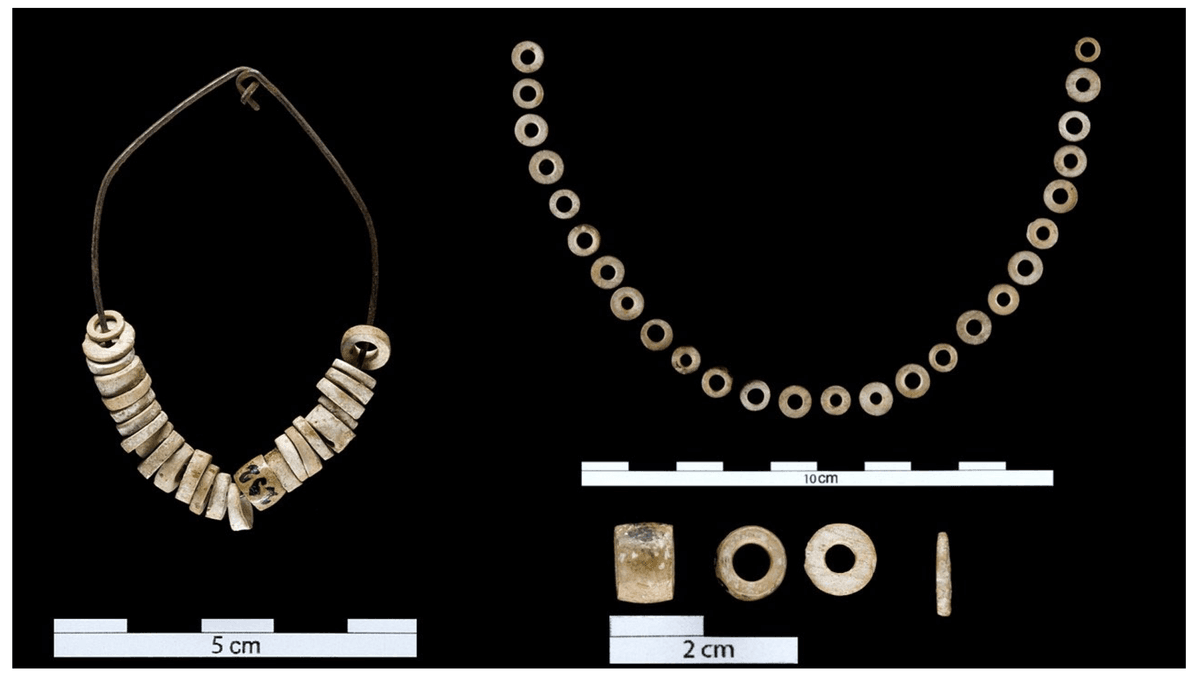
Necklaces dating back to the Upper Palaeolithic have been recreated from caves in southern Spain, with some of the beads made from the shells of fossilized marine mollusks. Curiously, however, the makers of these ancient adornments appear to have specifically selected two species of scaphopods – or tusk shells – despite the abundance of 24 different species in the nearby Pliocene basins from which they were collected.
The rest of this article is behind a paywall. Please sign in or subscribe to access the full content.
The practice of collecting fossils seems to have become popular in Europe during the Stone Age, with evidence of shells and even prehistoric bones being traded over vast exchange networks. However, despite the discovery of numerous fossils at Palaeolithic and Neolithic hunter-gatherer sites, the symbolic and utilitarian functions of these relics are difficult to ascertain.
The authors of a new study therefore decided to take a closer look at scaphopod fossils from two sites in Southern Spain, known as El Tesoro and Cueva del Hoyo de la Mina. In total, they counted 26 tusk shell fragments from the former, while the latter yielded a further 11.
Combined, these two sites account for 14.4 percent of all the fossil scaphopods collected by prehistoric humans in the Iberian Peninsula. According to the researchers, the shells are likely to date back to the lower Pliocene – which lasted from 5.3 to 3.6 million years ago – and were probably retrieved from the nearby Malaga coast.
Yet while these seaside deposits are littered with two dozen species of scaphopod, the inhabitants of both sites appear to have been interested in just two of these – known as Paradentalium inaequale and Paradentalium sexangulum. At Hoyo de la Mina, some of the shell fragments date all the way back to the Magdalenian period – which began some 17,000 years ago – while the specimens at El Tesoro are from the later Neolithic.
Elsewhere in Spain, the exact same species of tusk shells has also been found at sites like Reclau Viver, which is even older than the two caves investigated in this study and probably dates back to the Solutrean period, some 22,000 years ago.
Exactly why these two specific species were chosen so consistently is unclear, although the fact that some of the shells were covered in red ocher suggests that they may have held some sort of ritual importance. All of the fragments found at El Tesoro and Hoyo de la Mina also show signs of having been polished, emptied, and otherwise modified for ornamental purposes.
For instance, at El Tesoro, shell fragments were fitted one inside the other in order to create a clasp for a necklace.
Overall, these findings suggest that prehistoric humans may have been making jewelry from fossils more than 20,000 years ago, although it’s hard to pinpoint exactly when people began collecting fossils and why. So far, the oldest known evidence for this activity comes from a 65,000-year-old Homo sapiens site in South Africa, where a trilobite fossil has been found.
In Europe, there are indications that Neanderthals may even have been the first fossil collectors, with a bunch of prehistoric sea shells having been discovered in the Prado Vargas Cave in northern Spain. Researchers currently have no idea why these extinct hominids went out collecting fossils, although they suggest the cache may have been amassed by Neanderthal children – just for fun.
The study has been published in the journal Quaternary.
Source Link: Prehistoric Humans Made Necklaces From Marine Mollusk Fossils 20,000 Years Ago